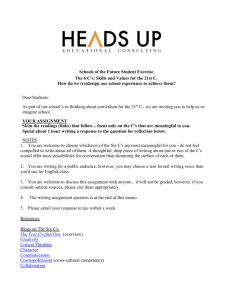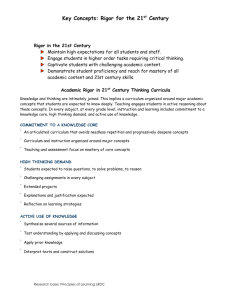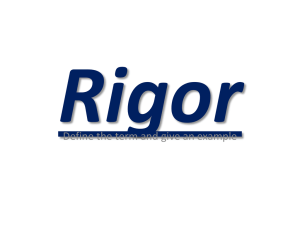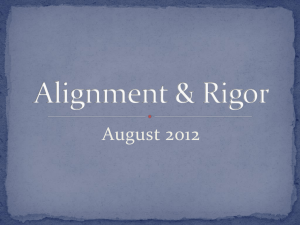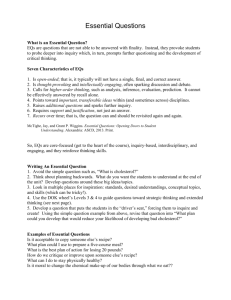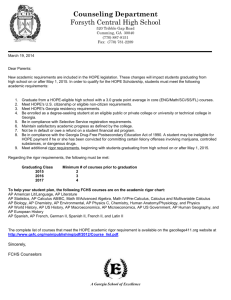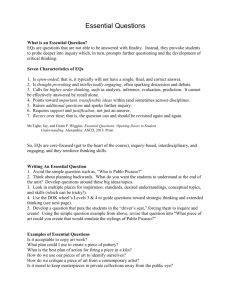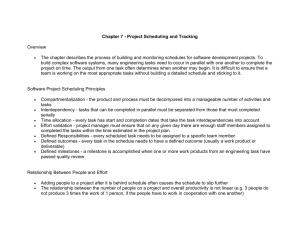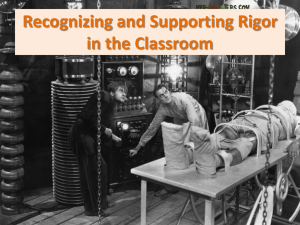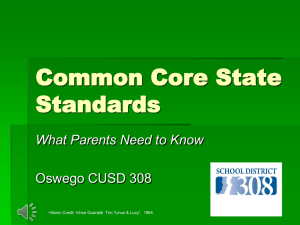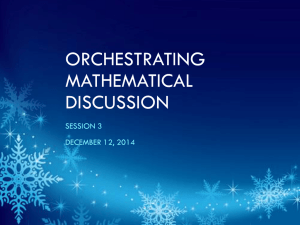Differentiation Tip: Focus on Rigor Rigor describes the processes
advertisement
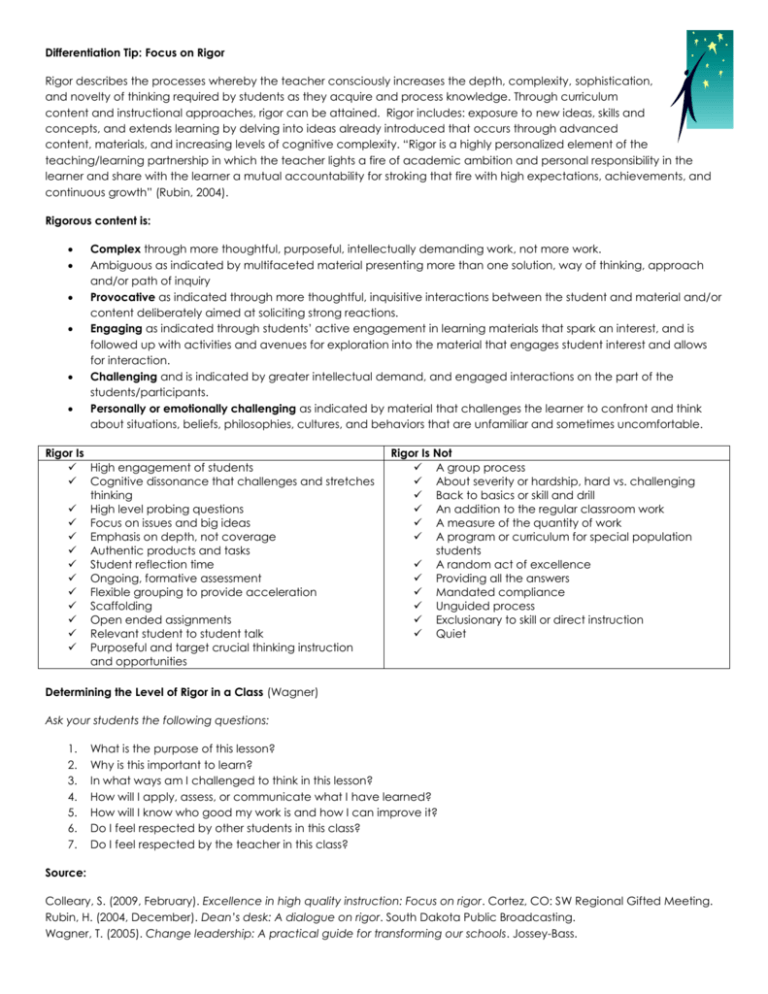
Differentiation Tip: Focus on Rigor Rigor describes the processes whereby the teacher consciously increases the depth, complexity, sophistication, and novelty of thinking required by students as they acquire and process knowledge. Through curriculum content and instructional approaches, rigor can be attained. Rigor includes: exposure to new ideas, skills and concepts, and extends learning by delving into ideas already introduced that occurs through advanced content, materials, and increasing levels of cognitive complexity. “Rigor is a highly personalized element of the teaching/learning partnership in which the teacher lights a fire of academic ambition and personal responsibility in the learner and share with the learner a mutual accountability for stroking that fire with high expectations, achievements, and continuous growth” (Rubin, 2004). Rigorous content is: Complex through more thoughtful, purposeful, intellectually demanding work, not more work. Ambiguous as indicated by multifaceted material presenting more than one solution, way of thinking, approach and/or path of inquiry Provocative as indicated through more thoughtful, inquisitive interactions between the student and material and/or content deliberately aimed at soliciting strong reactions. Engaging as indicated through students’ active engagement in learning materials that spark an interest, and is followed up with activities and avenues for exploration into the material that engages student interest and allows for interaction. Challenging and is indicated by greater intellectual demand, and engaged interactions on the part of the students/participants. Personally or emotionally challenging as indicated by material that challenges the learner to confront and think about situations, beliefs, philosophies, cultures, and behaviors that are unfamiliar and sometimes uncomfortable. Rigor Is High engagement of students Cognitive dissonance that challenges and stretches thinking High level probing questions Focus on issues and big ideas Emphasis on depth, not coverage Authentic products and tasks Student reflection time Ongoing, formative assessment Flexible grouping to provide acceleration Scaffolding Open ended assignments Relevant student to student talk Purposeful and target crucial thinking instruction and opportunities Rigor Is Not A group process About severity or hardship, hard vs. challenging Back to basics or skill and drill An addition to the regular classroom work A measure of the quantity of work A program or curriculum for special population students A random act of excellence Providing all the answers Mandated compliance Unguided process Exclusionary to skill or direct instruction Quiet Determining the Level of Rigor in a Class (Wagner) Ask your students the following questions: 1. 2. 3. 4. 5. 6. 7. What is the purpose of this lesson? Why is this important to learn? In what ways am I challenged to think in this lesson? How will I apply, assess, or communicate what I have learned? How will I know who good my work is and how I can improve it? Do I feel respected by other students in this class? Do I feel respected by the teacher in this class? Source: Colleary, S. (2009, February). Excellence in high quality instruction: Focus on rigor. Cortez, CO: SW Regional Gifted Meeting. Rubin, H. (2004, December). Dean’s desk: A dialogue on rigor. South Dakota Public Broadcasting. Wagner, T. (2005). Change leadership: A practical guide for transforming our schools. Jossey-Bass.
